One might expect Diana (Annie Parisse) and Daryl (Paul Sparks) to be freaked out when their son Andrew (Owen Campbell) introduces them to his new girlfriend Marlene (Gus Birney) in “Giving Birth to a Butterfly,” learning no later that they may soon have a daughter-in-law that they may also be grandparents, and not necessarily in that order. However, the two are remarkably unfazed when this news is sprung on them, each so consumed with their own personal drama that this is unlikely to register when Diana worries she may be the victim of an online scam from the dresses she sells on eBay and Daryl hopes to open his own chicken restaurant after years of toiling away behind the counter of a fast food joint. But you also get the sense that taken on its own, the couple can only be envious of an impending birth – not because of what it will mean for Andrew and Marlene, who could be burying themselves in debt trying to take care of it as they once did, but of the newborn itself, free of any expectations to live up to or obligations to fulfill when its identity only will take shape upon its arrival.
Theodore Schaefer’s savvy use of 16mm film gives the gauzy feeling that you are actually inside a cocoon in his feature debut, making the prospect of leaving undesirable when it’s such an enchanting space free of judgment of its characters’ eccentricities as they rebel futilely against their station in life. Besides Diana and Daryl, Marlene has tired of having to apologize for her mother (Constance Schulman), who takes her desire to be an actress a little too seriously, and Danielle (Rachel Resheff), Diana and Daryl’s other child, can take comfort in pretending to be someone else during rehearsals for her high school play, though that refuge is short-lived as she has to decide what direction she should take in life when she has to consider what will happen after graduation. From a shrewd script co-written with Patrick Lawler, these real world concerns take on the surreal dimension they generally have once imagining the worst gets involved and while there’s a disconnect between reality and the realm that the characters inhabit when living largely in their own minds, mined for laughs when operating with logic that only makes sense to them, but extraordinarily moving when they find understanding in one another and they are made to feel like they’re not so strange after all.
Wildly original at the same time that its aesthetic makes it feel like a cherished keepsake from generations past, “Giving Birth to a Butterfly” is finding its way into the world this week, starting out with an exclusive run at New York’s Spectacle Theater where it will be accompanied with a variety of special guests before it takes flight across the country and available to stream on Fandor. Recently, Schaefer took the time to talk about how his decade-long collaboration with Lawler, building family ties throughout the production and how inspiration grew from the question of what’s in a name.
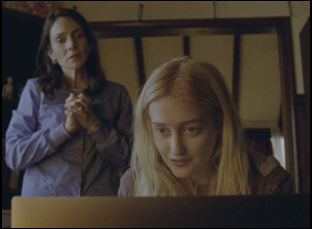
In some ways, yeah. That might’ve been Patrick’s idea because we often use Patrick’s name in films, and at first it made sense because we needed a name that could have multiple nicknames for, but it was really true for me. I think this is a film that deals with assigned roles and my name has been something that has changed throughout my life. When I was a kid, I was Teddy, then I became Ted. and I’d never really been Theodore, except professionally, so it made a lot of sense, both as a joke and but also a Rosetta Stone for my own personal vision of what this film is about.
The whole idea of finding the right name actually becomes a great subplot in the film, with the chef played by Paul Sparks trying to figure out what to call this restaurant he has in his head. Was that idea a spark throughout?
Names were always really important. Every character’s name has some backstory to it and I think they have a lot of import, so that was part of it. But Paul’s character is pretty closely resembles Patrick’s father in certain ways and he had this dream of creating a restaurant that always had some terrible name. He told me the story of him bringing all the kids in really excitedly and serving them hot dog soup, which is just a hot dog and water, so that was the inspiration for that character – and there are also some comps in my life, people who are so obsessed with [the idea that], “We’ve just got to find the right words and then it’ll all click into place” and names are the ultimate version of that.
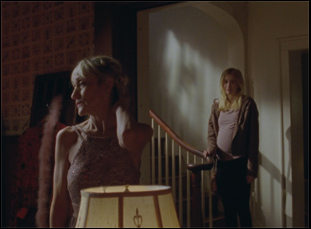
We met through a therapist who was seeing both of us and asked permission to share each other’s information because he thought I should write a movie about Patrick’s life. It took me a year to contact Patrick, but I read all of his work and was just so blown away. I felt like, “This is exactly what I want to do,” but he primarily wrote poetry, so I approached him and said, “Hey, I have an idea that takes one of your books” — that gives you a basic guide of his life and his relationship with his father — “and I’d love to write it with you if you’re interested.” And I went up to Syracuse and we started writing [together]. We wrote that really quickly, and we were both like, “Want to write something else?” Very organically, it just became clear, we share a brain in some weird way, [though] we’re exactly 40 years apart in age. It’s strange, but it just works.
It’s interesting to hear of Patrick’s background as a poet because there are at least a few scenes in “Giving Birth to a Butterfly” where there are these monologues that you find the visual poetry in, which is hard to do when it’s simply one person speaking. I’m thinking specifically of this scene in the car when Marlene is describing a painting in relation to her mother and the camera drifts outside of the car where someone is collecting fruit that they’ve dropped in the parking lot. Do you find that approach to screenwriting has lent itself to cinematic ideas?
We write with a certain cinematic language in mind, like this is how it’s going to go, but in general, I like to keep it as open as possible so we can have a lot of collaboration. We [knew] we were going to have these monologues and I don’t want to just sit there on the character for [long scenes], and it’s going to happen multiple times, so we have to find interesting ways that expand on what’s being said. Our cinematographer Matt Clegg is owed a lot of credit for that particular shot because we had certain ideas, and Matt had the idea of catching something else [with the camera] and it’s grapefruits – not oranges, as many people think, and that evolved when we brought Patrick in and we’re like, “Oh my God, this is a great idea. How are we going to make this work?” And then Patrick plays the man who drops the grapefruit. I thought it was a perfect cameo for him.
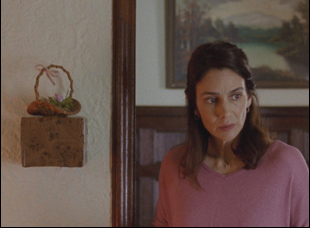
That shot with the grapefruit and the cat was really unintentional and ideal in a lot of ways. The other thing was the original pet store we had fell through just before production, and that location is so much better than what we had originally [planned for]. We had to shoot in the city [even though] most of it had been shot outside of the city and that was something where I was [thought], this is this really makes such a such a difference.
Is it true a lot of these locations were homes of family and friends?
Yeah, certainly the [house at the end with] Nina [played by Judith Roberts] was a place I’ve spent so much time at and it’s so bizarre. There’s like four different stones on the outside, [both] brick and rock, and then there [really] is a hidden room behind a bookshelf, so there was just so much where I [thought], “This house is so bizarre and magical. It made perfect sense. And a lot of this movie is my own reflection on figuring out identity, so doing it in my literal past was beautiful. Monica’s house was my neighbor across the street when I was growing up, and my parents no longer live in that town, but it was a lot of pulling favors, but also going exactly to the places that were already in my head, [thinking] “This is what it should look like.”
What was it like working with the actors on developing the relationships? I understand there was a week of rehearsals.
I came up in the industry as a first AD and on indie films, there’s never rehearsals at all, so it was really important for me and it actually doesn’t really cost that much money to pay people to show up for three days ahead of the shooting, but it made a huge difference. And Annie [Parisse] and Paul [Sparks] have a relationship [in real life as well as] Gus [Birney] and Connie [Schulman], so seeing how they interact with each other really helped, especially a movie where the acting has a real specific pitch to it. It felt like the only way we can do it is making sure before we step on set, we’re all on the same page. The last thing you want to do is shoot for a week without, say, Paul’s character, and then he shows up and has a different idea [from everybody else on set], and then you’re trying to fit it in, so we wanted everybody to be together before so we can make sure there’s a clear, concise tone that’s being set throughout.
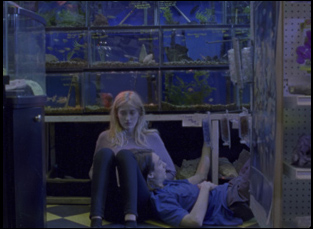
Yeah, I think they were all really excited by that. They’re all theater actors and our casting director [Kate Geller] early on was like, “I think the smartest thing is really push to get really strong theater actors because there is such a theatricality to a lot of these parts. It’s going to make such a difference.” And I think it was Connie’s first day when she does the monologue at the end and we were just so blown away. It’s a hard tone to strike — her character especially — and she just completely nails it.
It was interesting to hear that you actually consulted with textile designers for the color palette. What was that like to come up with?
Yeah, I love the nitty gritty of getting into overly specific things that nobody will ever really pick up on in the final film because that’s just fun. Two of my good friends actually are textile designers, and one of them had gotten this old box of Pantones, so we did this [first] on a short, and then on this, where we would just take out the Pantones and start talking about what this sort of color should be saying and how we can create a pattern that fits throughout the film, so [my friend] literally put together swaths with different Pantones, and then we would take that to our production designer and costume designer and they would run with it.
There’s also some wonderful texture in the score. What was the process of putting music on this like?
Yeah, Mead Bernard, the composer] had worked with Matt, our cinematographer before, which is how we’d gotten in touch, and he just completely got the movie. It was a lot of talking of how do we find ways to make this feel unique and not overbearing because it’s doing a lot of work in setting the tone and because the movie shifts so dramatically, we needed to lay that in the score so that the audience, especially hopefully on repeat viewings, would see we’re really hinting at a lot throughout this, so by the time it gets to that [point], you’re like, “Ahhhh.” It was really hard because I had some thoughts, but a lot of that shifted once we had the edit and I was a little less sure of what my initial intention was, but Mead did such a good job of incorporating a lot of sounds — the train whistle is in there, and some of the wind chimes [that are part of the final destination]. He really took all these little pieces of sound design that we had laid in and used that to build the score up, which was really, really fun.
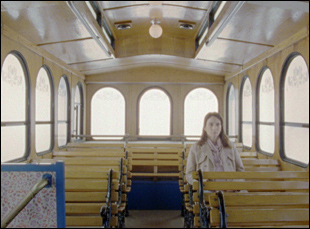
In the sense that I was using so many family friends, I knew there was an element of that [going in], but then with the casting process, it just became so organic. We cast Gus and she was like, “I think my mom should play this role,” and with Annie, I don’t even know who came up with the suggestion [of Paul to play her husband], but we were like, “What do you guys think?” And they were like, “That sounds perfect. We haven’t done something like this before.” But this kind of movie is made that way. We did a lot with a little, and that is kudos to the cast and crew [where] we got really lucky. There’s no way to do it without really creating an environment where people feel like they’re part of a community, so having built-in families made that really naturally work.
“Giving Birth to a Butterfly” will play an exclusive engagements at Spectacle NYC in Brooklyn from May 1-5, the Roxy Cinema in New York on May 4th, 6th and 7th, and the Laemmle NoHo 7 in Los Angeles from May 9-11. It will start streaming on Fandor on May 16th.




